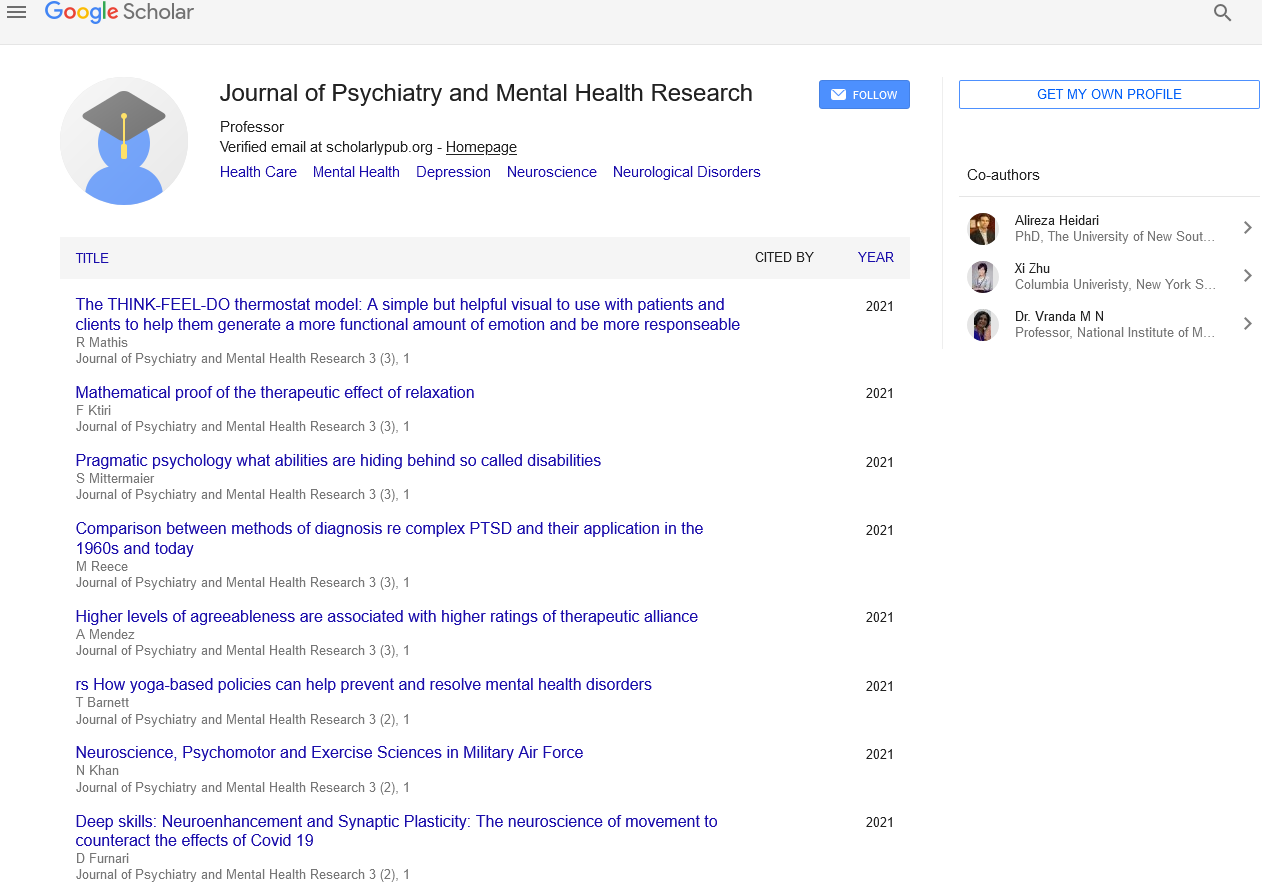autism is a neurodevelopmental disorder characterized by difficulties with social interaction and communication and by restricted behaviors
Received: 03-Jul-2024 Editor assigned: 05-Jul-2024 Accepted Date: Jul 14, 2024; Reviewed: 08-Jul-2024 Revised: 11-Jul-2024 Published: 23-Jul-2024
This open-access article is distributed under the terms of the Creative Commons Attribution Non-Commercial License (CC BY-NC) (http://creativecommons.org/licenses/by-nc/4.0/), which permits reuse, distribution and reproduction of the article, provided that the original work is properly cited and the reuse is restricted to noncommercial purposes. For commercial reuse, contact reprints@pulsus.com
Description
Parents often notice signs during the first three years of their child's life. These signs often develop gradually, though some autistic children experience regression in their communication and social skills after reaching developmental milestones at a normal pace. Autism is associated with a combination of genetic and environmental factors. Risk factors during pregnancy include certain infections, such as rubella, toxins including valproic acid, alcohol, cocaine, pesticides, lead, and air pollution, fetal growth restriction, and autoimmune diseases. Controversies surround other proposed environmental causes; for example, the vaccine hypothesis, which has been disproven. Autism affects information processing in the brain and how nerve cells and their synapses connect and organize; how this occurs is not well understood. The Diagnostic and Statistical Manual of Mental Disorders (DSM-5) combines forms of the condition, including Asperger syndrome and pervasive developmental disorder not otherwise specified (PDD-NOS) into the diagnosis of autism spectrum disorder (ASD).
Several interventions have been shown to reduce symptoms and improve the ability of autistic people to function and participate independently in the community. Behavioral, psychological, education, and/or skillbuilding interventions may be used to assist autistic people to learn life skills necessary for living independently, as well as other social, communication, and language skills. Therapy also aims to reduce challenging behaviors and build upon strengths. Some autistic adults are unable to live independently. An autistic culture has developed, with some individuals seeking a cure and others believing autism should be accepted as a difference to be accommodated instead of cured. Globally, autism is estimated to affect 24.8 million people as of 2015. In the 2000s, the number of autistic people worldwide was estimated at 1–2 per 1,000 people. In the developed countries, about 1.5% of children are diagnosed with ASD as of 2017, up from 0.7% in 2000 in the United States. It is diagnosed four to five times more often in males than females. The number of people diagnosed has increased considerably since the 1990s, which may be partly due to increased recognition of the condition.
Social development
Social deficits distinguish autism and the related autism spectrum disorders (ASD; see Classification) from other developmental disorders. Autistic people have social impairments and often lack the intuition about others that many people take for granted. Noted autistic Temple Grandin described her inability to understand the social communication of neurotypicals, or people with typical neural development, as leaving her feeling "like an anthropologist on Mars". Unusual social development becomes apparent early in childhood. Autistic infants show less attention to social stimuli, smile and look at others less often, and respond less to their own name. Autistic toddlers differ more strikingly from social norms; for example, they have less eye contact and turn-taking, and do not have the ability to use simple movements to express themselves, such as pointing at things. Three- to five-year-old autistic children are less likely to exhibit social understanding, approach others spontaneously, imitate and respond to emotions, communicate nonverbally, and take turns with others. However, they do form attachments to their primary caregivers. Most autistic children display moderately less attachment security than neurotypical children, although this difference disappears in children with higher mental development or less pronounced autistic traits. Older children and adults with ASD perform worse on tests of face and emotion recognition although this may be partly due to a lower ability to define a person's own emotions.
Communication
About one third to half of autistic people do not develop enough natural speech to meet their daily communication needs Differences in communication may be present from the first year of life, and may include delayed onset of babbling, unusual gestures, diminished responsiveness, and vocal patterns that are not synchronized with the caregiver.
In the second and third years, autistic children have less frequent and less diverse babbling, consonants, words, and word combinations; their gestures are less often integrated with words. Autistic children are less likely to make requests or share experiences, and are more likely to simply repeat others' words (echolalia) or reverse pronouns. Joint attention seems to be necessary for functional speech, and deficits in joint attention seem to distinguish infants with ASD.
For example, they may look at a pointing hand instead of the object to which the hand is pointing, and they consistently fail to point at objects in order to comment on or share an experience. Autistic children may have difficulty with imaginative play and with developing symbols into language.





